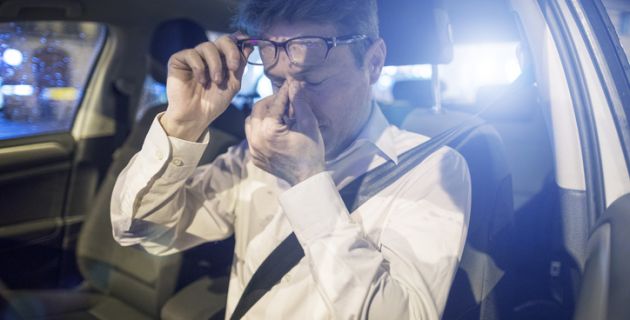According to the National Highway Traffic Safety Administration (NHTSA), the passenger vehicle occupant fatality rate at nighttime is nearly 3 times higher than the daytime rate.
While it’s difficult to pinpoint the precise number of crashes, injuries, and fatalities directly caused by drowsy driving, it is easy to see how the lack of visibility, fatigue, and increased percentage of drunk drivers on the road can heighten the risk of nighttime driving.
Below, we will provide some tips and advice for minimizing your nighttime driving risks.
The Limitation of Human Eyes
Human eyesight is limited and made even more so at night. With inadequate light, our eyes have difficulty with peripheral vision, depth perception, and object recognition. To make matters worse, low-beam headlights typically only reach 160 feet in front of the road.
The higher your driving speed, the less time you have to react or stop if there is an object in the road, a curve, or some other issue. If you are traveling at 70 MPH, you’ll cover that distance in less than 2 seconds. Roughly speaking, the average person requires approximately 1.5 seconds to process visual information and react accordingly. In such cases, you are left with practically no time to react.
Further, at those speeds, the car will need 300 feet to reach a complete stop. You may be able to swerve and avoid an object in the road, but such wild course corrections could easily run you off the road.
Because of this, the first and most important tip is to slow down, especially on rural and windy roads. Even if signs say that the speed limit is 65 MPH, driving conditions should always determine how you drive. If that means going 55 MPH in order to feel safe, so be it. This small yet impactful change in your driving can help keep you safe and is a key component of how to improve your driving skills.
Helpful Tips for Driving Safer at Night

There are many helpful tips for safe driving in general, but those pertaining to night driving are unique and important to understand to keep yourself and others safe.
- Get sleep.
The most obvious tip involves getting adequate sleep every night to reduce the risks of drowsy driving. Your circadian rhythm, the body's internal sleep clock, automatically dips once the sun sets. This dip is compounded if you are already running low on sleep. Doctors suggest that you prioritize sleeping at least 7 to 8 hours per night, but if you are planning on driving late into the night, you should try and get even more sleep the night before to avoid putting yourself and others at risk. - Maintain your headlights.
Your headlights are often your only source of visual information. As a result, it’s critical that they are functioning, cleaned, and aimed properly. If necessary, read your owner’s manual to see how to readjust your headlights. In order to prevent headlight haze, purchase a headlight polishing kit and periodically use it to give yourself peak visibility. - Avoid staring at oncoming lights.
Your eyes take a while to adjust to nighttime conditions. Although it may be difficult, do your best to avoid blinding yourself by staring at oncoming car lights. This allows you to maintain your night vision and also keeps your eyes focused on the road ahead of you. If the car behind you has bright lights or high beams, readjust your mirrors or flip them to the dimming setting. - Keep your eyes moving.
To prevent eye fatigue while night driving, you should continuously scan your field of vision instead of focusing vaguely ahead. By remaining alert, you prevent your eyes from relaxing and transitioning towards sleep. - Stop if you are getting drowsy.
According to the National Sleep Foundation, “Drowsy driving is dangerous because sleep deprivation can have similar effects on your body as drinking alcohol. Being awake for 18 hours straight makes you drive like you have a blood alcohol level of .05 (for reference, .08 is considered drunk). If you’ve been awake for a full 24 hours and drive—say, after a night where you just couldn’t fall asleep—it’s like you have a blood alcohol level of .10.” If you’re driving late at night during peak sleepiness cycles, it is vital that you stay alert for signs of drowsiness, such as:- Eyes involuntarily closing.
- Crossing road lines.
- Driving over a rumble strip.
- Having trouble focusing your vision.
If you are experiencing these factors, do not keep on driving. As mentioned, trying to power your way through drowsiness, especially if you have a long way to go, is extremely dangerous. Pull over in a safe, well-lit place, set an alarm, and get some rest. Even if it’s only an hour-long nap, that time can give you the energy to wake up refreshed and capable of resuming your drive.
The potential repercussions of drowsy driving are clearly dangerous, and these are even irrespective of other hazardous driving conditions, including driving on black ice and snow or bad driving habits like texting or using social media. However, we know that sometimes you just can't avoid a nighttime drive.
If you have one upcoming on your agenda, ensure that you get plenty of sleep the night before, drink caffeine, and follow the tips above. Taking proactive measures protects you, your passengers, and other drivers sharing the road.